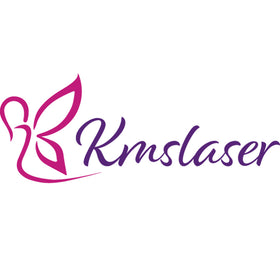Radial vs Focused Shockwave Therapy: What’s the Difference?
Understanding the Physics Behind Each Technology
Shockwave therapy devices are generally categorized into two types: radial and focused. While both use acoustic waves to stimulate healing and relieve pain, they differ in how those waves are generated and how deeply they penetrate the tissue. **Radial shockwave therapy** disperses energy outward in a wave that spreads across a wide surface area. It’s ideal for larger muscle groups and superficial conditions. **Focused shockwave therapy**, on the other hand, directs energy to a specific point at a precise depth, targeting small areas such as tendons or bone surfaces. Our 3-in-1 device integrates both modes, allowing clinics to customize treatment intensity and depth for various indications.
| Type | Wave Pattern | Penetration Depth |
|---|---|---|
| Radial | Spreads outward (divergent) | 0.5 – 3 cm |
| Focused | Converges at a focal point | Up to 12 cm |
Choosing the Right Mode Based on Clinical or Aesthetic Goals
Each type of shockwave therapy has its strengths. Radial is ideal for treating broad surface areas like quads, hamstrings, or cellulite zones. It’s also preferred for beginners or clients with low pain thresholds. Focused therapy is better for deep tissue injuries, scar tissue, or trigger points, offering precision without collateral tissue impact. In pain management clinics, both types are often used together—starting with radial to relax the area, followed by focused treatment for pinpoint healing. Our high-frequency system lets therapists toggle between modes easily.
| Treatment Goal | Best Option | Why |
|---|---|---|
| Cellulite reduction | Radial | Covers wider surface and fat layer |
| Tendinitis or joint pain | Focused | Targets deeper tissue precisely |
| Post-training recovery | Radial | Stimulates large muscle group recovery |
Energy Levels, Coverage, and Maintenance Differences
In addition to treatment goals, there are operational differences to consider. Focused shockwave devices are typically more expensive, require more calibration, and have shorter applicator lifespans. Radial systems are easier to maintain, have lower consumable costs, and cover larger areas faster. Our 3-in-1 system includes TECAR and massage modes in addition to both shockwave types, giving therapists maximum flexibility in balancing intensity, depth, and client tolerance.
| Factor | Radial Shockwave | Focused Shockwave |
|---|---|---|
| Energy delivery | Lower energy, broad area | High energy, concentrated point |
| Maintenance cost | Lower | Higher (projectile, coils) |
| Session speed | Faster over large zones | Precise but slower |
Frequently Asked Questions (FAQ)
Q: Which is more effective—radial or focused shockwave?
A: Neither is better universally. Radial is great for general recovery and aesthetic use. Focused is superior for pinpoint pain and joint-related issues.
Q: Can I have both in one device?
A: Yes! Our 3-in-1 device includes both radial and focused shockwave therapy modes.
Q: Are there differences in client comfort?
A: Focused shockwaves may feel more intense but are very precise. Radial is more diffuse and usually more comfortable for new clients.
Q: Is training required for both types?
A: Yes, especially for focused shockwave due to its depth and impact. Radial is more intuitive to operate.
Q: Where can I buy a multi-function unit with both options?
A: Check out our advanced 3-in-1 device here: shockwave therapy system with radial, focused, and TECAR functions.
Conclusion: Choose Based on Depth, Precision, and Purpose
Radial and focused shockwave therapy each serve unique functions. Shockwave therapy has evolved—now you can treat both large areas and deep pain points with one system. With the right equipment, your clinic can offer personalized care for every type of client.
📞 Want help choosing a dual-mode shockwave solution?
Email sophia@kmslaser.com or message us on WhatsApp: +86 18676839070





